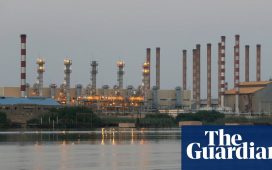The power of a good chart or map lies in its ability to inform the debates and decisions that lie ahead. Here are 10 graphics published by the Financial Times in 2019 where the real story is often about what happens next — in the years, decades and centuries to follow.
Boris Johnson’s victory in the UK’s December general election, driven by his promise to “get Brexit done”, means that the premise of this graphic from earlier in the year — a “hard Brexit” — remains a strong possibility as we enter 2020. The estimated per capita income losses shown on the map illustrate cartographer Waldo Tobler’s first law of geography: “Everything is related to everything else, but near things are more related than distant things.” Most economists predict a hard Brexit will hit the UK hardest, with neighbour Ireland a close second — but the ripple is predicted to extend across Europe.
Not all countries have made progress in their efforts to reach vaccination targets. Countries affected by war or civil unrest, such as Syria and South Sudan, have seen a big decline in measles vaccination rates in the past decade. In the US, where there is a prominent “anti-vax” movement, levels remain stubbornly below the 95 per cent threshold needed to prevent wider outbreaks. Meanwhile, new research suggests that the disease has a much more serious effect on children’s immune systems than previously thought.
Workers are set to experience major changes to their jobs and careers as a result of automation. And according to the OECD, their governments are not preparing them for the disruption. Separate analysis by McKinsey suggests that those in low-skilled and low-paying jobs are exposed to the greatest risk of automation. But virtually every worker faces the threat of elements of their job being automated.
Sea levels are rising quicker than previously thought — and pose a significant risk to coastal cities and low-lying islands, according to a September report from the UN’s Intergovernmental Panel on Climate Change. The UN’s researchers warned that extreme floods — typically experienced once a century — are likely to happen at least once a year by 2050 in many regions, even if global warming is limited to 1.5C above pre-industrial levels.
Climate change presents an unusual economic opportunity to English winegrowers according to academics at the University of East Anglia. A combined terrestrial and climatic model identifies over 33,000 hectares of prime viticulture land — an area larger than France’s Champagne region. The research suggests that Essex and Suffolk are particularly ripe for cultivation, while many current English vineyards are “sub-optimally” located. Useful intelligence, if you think you could run a vineyard.
2019 saw the 50th anniversary of the first manned Apollo landing — and renewed questions asking why it has been so long since the last crewed mission to the moon in 1972. With Nasa’s publicly declared goal of returning humans to Earth’s closest neighbour by 2024 and billionaire entrepreneurs joining aspiring space nations in launching ambitious missions of their own, one thing seems certain: space is set to become extremely busy.
China is leading a global boom in surveillance technology that is fuelling increasingly polarised views on privacy and security. San Francisco police may have banned its police from using facial recognition software but, according to the FT’s Henry Mance, there are a growing number of companies justifying their technological advances on the premise that “anonymity was just a phase in human existence”.
The simmering trade war between the US and China threatened to spiral out of retaliatory control before signs of de-escalation finally appeared at the end of the year. This animated map paints a stark picture of the inroads into global trade China has made since joining the World Trade Organization in 2000. One analyst described 2019 as “peak China”.
The US election will dominate news coverage in 2020. Rather than predicting a winner, a new FT/Peterson Foundation poll on US voter economic sentiment hints at some of the debates that will feature in the campaign, as two-thirds of Americans say the Trump presidency has not made them better off.
Finally, geologists revealed in December that magnetic north — the point on Earth’s surface that points directly downwards — is moving at an unprecedented rate of 50 kilometres a year. The latest update to the World Magnetic Model also confirmed that the planet’s magnetic field is weakening, which could eventually lead to a complete reversal in the field. Under such a scenario, Earth would be exposed to harmful solar and cosmic radiation, wreaking havoc on terrestrial life. As we enter the new decade looking for signs of optimism in an uncertain world, it is of some comfort that experts consider the chances of this particular catastrophe remote — at least for the next few centuries.













